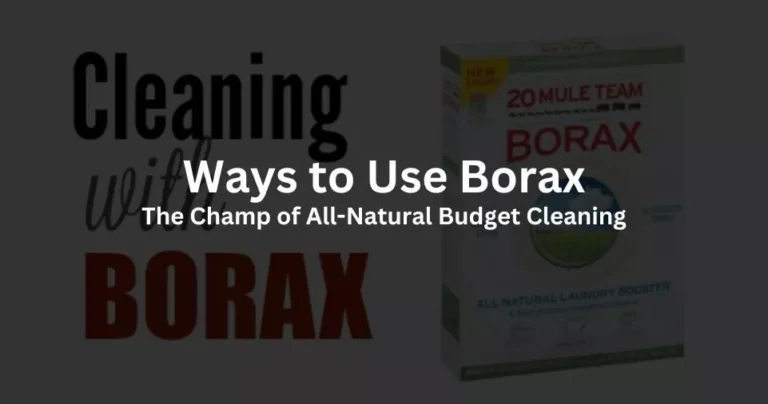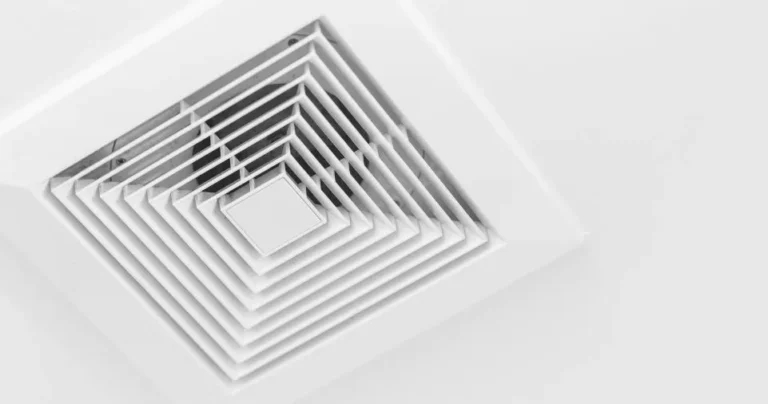Smarter Ways to Clean Your Home 2023
Are you tired of spending hours on end cleaning your home, only to feel like the mess keeps piling up? Keeping a clean and organized living space is essential for a comfortable and healthy lifestyle. However, finding the time and energy to tackle all the cleaning tasks can be overwhelming. But fear not! In this article, we’ll show you a smarter way to clean your home, saving you time, effort, and frustration.
By implementing efficient strategies and utilizing smart cleaning techniques, you’ll be able to maintain a pristine home without sacrificing your valuable time. We understand the pain points associated with cleaning, and we’re here to provide you with practical solutions to make the process easier and more effective.
The Importance of Efficient Home Cleaning
Benefits of a clean and organized living space
Keeping your home clean and organized goes beyond just aesthetics—it has numerous benefits that can greatly enhance your overall quality of life. When your living space is tidy, you experience a sense of calm and tranquility, allowing you to fully relax and unwind. Imagine coming home after a long day to a neat and clutter-free environment where everything has its place. It’s like stepping into your own personal oasis, where you can escape the chaos of the outside world.
Moreover, a clean and organized home can also save you time and energy. When everything is in its rightful place, you no longer waste precious minutes searching for misplaced items. Instead, you can focus on the things that truly matter to you, whether it’s spending quality time with your loved ones, pursuing your hobbies, or simply enjoying a good book.
Impact on mental and physical well-being
Did you know that a clean home can have a positive impact on your mental and physical well-being? It’s true! Research has shown that living in a clean and organized environment can reduce stress levels and improve your overall mood. Clutter and mess can lead to feelings of overwhelm and anxiety, whereas a clean space promotes a sense of order and control.
In addition to mental well-being, maintaining a clean home also contributes to your physical health. Regular cleaning and dusting help eliminate allergens, such as dust mites and pet dander, which can trigger allergies and respiratory issues. By keeping your home clean, you create a healthier living environment for yourself and your family.
Increased productivity and reduced stress levels
Have you ever noticed how your productivity levels seem to soar when you’re working in a clean and clutter-free space? That’s because a tidy environment can have a significant impact on your ability to focus and concentrate. When your surroundings are organized, your mind feels less scattered, allowing you to tackle tasks with greater efficiency and effectiveness.
On the other hand, a cluttered and messy space can be a constant source of distraction and stress. It’s difficult to concentrate on your work when your attention is constantly pulled towards the piles of papers, scattered belongings, or untidy surfaces. By taking the time to clean and organize your home, you create an environment that fosters productivity and minimizes stress.
Remember, a clean home is not just a superficial goal—it’s a key aspect of maintaining your overall well-being. By investing time and effort into efficient home cleaning strategies, you can enjoy the benefits of a clean and organized living space, enhance your mental and physical health, and boost your productivity levels. So, let’s dive into some smart cleaning strategies that will help you achieve a spotless and harmonious home.
Also Read: Why use blockchain in supply chains?
Smart Cleaning Strategies

Decluttering and organizing for easier cleaning
Before you dive into the cleaning process, it’s important to declutter and organize your home. Clutter not only makes cleaning more difficult and time-consuming but also adds to the overall visual chaos. Take the time to assess each room and identify items that are no longer needed or are out of place. Consider donating or selling items that are in good condition but no longer serve a purpose in your home.
Once you’ve decluttered, it’s time to organize. Assign designated spaces for different categories of items and invest in storage solutions such as bins, shelves, or baskets. For example, in your kitchen, designate specific areas for cookware, utensils, and pantry items. When everything has a designated place, it becomes easier to maintain cleanliness and find items when you need them. Remember, a clutter-free and organized home sets the foundation for efficient cleaning.
Developing a cleaning schedule and routine
Consistency is key when it comes to maintaining a clean home. By developing a cleaning schedule and routine, you can ensure that tasks are not overlooked or neglected. Start by creating a list of daily, weekly, and monthly cleaning tasks. Daily tasks may include making beds, doing dishes, and wiping down surfaces. Weekly tasks could involve vacuuming, mopping floors, and cleaning bathrooms. Monthly tasks may include deep-cleaning appliances or decluttering specific areas.
Once you have your list, assign specific days or time slots for each task based on your availability and preferences. Having a schedule not only helps you stay organized but also prevents cleaning tasks from piling up and becoming overwhelming. Remember, consistency in your cleaning routine is the key to maintaining a consistently clean and inviting home.
Utilizing efficient cleaning tools and products
Cleaning is made significantly easier and more effective when you have the right tools and products at your disposal. Invest in high-quality cleaning tools that are designed to make your cleaning tasks more efficient. For example, microfiber cloths are excellent for dusting as they attract and hold onto dust particles better than traditional dusters.
Additionally, consider using environmentally friendly and non-toxic cleaning products. Not only are these products safer for your health and the environment, but they can also be just as effective as their chemical-laden counterparts. You can even make your own cleaning solutions using simple ingredients such as vinegar, baking soda, and lemon juice.
Adopting time-saving cleaning techniques
Cleaning doesn’t have to be a time-consuming chore. By adopting a few time-saving techniques, you can make the process more efficient and free up time for other activities. One effective technique is to work from top to bottom and left to right in each room. This ensures that any dust or dirt that falls will be addressed during the cleaning process, preventing the need for re-cleaning.
Another time-saving technique is to multitask. For example, while waiting for the bathroom cleaner to work its magic, you can use that time to wipe down kitchen countertops or dust the living room. By tackling multiple tasks simultaneously, you can maximize your productivity and get more done in less time.
Remember, by implementing these smart cleaning strategies, you can make the process of cleaning your home more efficient and enjoyable. Now, let’s move on to our room-by-room cleaning guide, where we’ll provide you with tips and techniques for achieving a spotless and well-maintained living space.
Room-by-Room Cleaning Guide
Kitchen: Tips for a spotless and hygienic cooking area
The kitchen is often considered the heart of the home, where delicious meals are prepared and memories are made. To keep your kitchen clean and inviting, start by decluttering countertops and organizing cabinets. Clear off any unnecessary items, leaving only essential appliances and utensils within reach. This not only creates a more spacious and visually appealing environment but also makes cleaning countertops a breeze.
When it comes to cleaning surfaces, use a mild dish soap or a mixture of vinegar and water to wipe down countertops, backsplashes, and appliances. Pay special attention to areas prone to spills and stains, such as the stovetop and microwave. For stainless steel appliances, a microfiber cloth and a gentle stainless-steel cleaner will leave them looking shiny and fingerprint-free.
Don’t forget to clean inside the refrigerator and pantry regularly. Dispose of expired items, wipe down shelves, and organize food products for easy access. Remember, a clean and organized kitchen is not only more aesthetically pleasing but also promotes a hygienic cooking environment.
Bathroom: Effective cleaning methods for a sparkling and sanitized space
Maintaining a clean and sanitized bathroom is crucial for both personal hygiene and a pleasant experience. Start by tackling the toilet. Use a toilet brush and a toilet bowl cleaner to thoroughly clean the inside of the bowl. Don’t forget to wipe down the exterior surfaces, including the seat and base.
Next, focus on the shower and bathtub. Remove any soap scum or mineral deposits using a mixture of vinegar and water or a designated shower cleaner. Scrub the surfaces using a non-abrasive brush or sponge, paying attention to corners and grout lines. For glass shower doors, a mixture of vinegar and dish soap can help remove stubborn water spots.
Finally, clean the sink and countertop area. Use a mild cleaner or a mixture of baking soda and water to scrub away stains and grime. Don’t neglect the faucet and handles—wipe them down with a microfiber cloth and a disinfectant cleaner. Remember, a clean and fresh-smelling bathroom creates a more pleasant experience for everyone.
Living Room: Maintaining a tidy and welcoming environment
The living room is where you relax, entertain guests, and spend quality time with loved ones. To maintain a tidy and welcoming environment, start by decluttering. Clear away any unnecessary items, such as magazines, toys, or excess throw pillows. Use storage solutions like baskets or ottomans with hidden compartments to keep everyday items organized but out of sight.
Next, focus on cleaning surfaces. Dust all surfaces, including shelves, coffee tables, and electronics, using a microfiber cloth or a duster. Pay attention to hard-to-reach areas, such as ceiling fans or light fixtures. Vacuum or clean upholstered furniture using appropriate cleaning techniques and products recommended by the manufacturer.
Lastly, don’t forget about flooring. Vacuum or sweep the floor to remove loose dirt and debris, and then mop using a suitable cleaner for the specific flooring type. Regularly cleaning and maintaining your living room ensures a comfortable and inviting space for relaxation and socializing.
Bedroom: Creating a peaceful and clean sanctuary
Your bedroom should be a tranquil retreat, promoting restful sleep and relaxation. To create a peaceful and clean sanctuary, start by making your bed every day. Straighten the sheets, fluff the pillows, and smooth out the comforter for a neat and inviting look.
Dust all surfaces, including nightstands, dressers, and lamps. Consider using a microfiber cloth or a dusting mitt, as they attract and trap dust particles more effectively. Vacuum or sweep the floor to remove dust, dirt, and any loose debris.
Organize your closet and drawers to reduce clutter. Donate or discard items you no longer need or use. Utilize storage solutions, such as drawer dividers or hanging organizers, to keep clothing and accessories neatly arranged.
Remember, a clean and clutter-free bedroom promotes a sense of calm and relaxation, setting the stage for a restful night’s sleep.
Other Areas: Cleaning solutions for the hallway, laundry room, and more
While the kitchen, bathroom, living room, and bedroom are often the focus of cleaning, don’t neglect other areas of your home. The hallway, for example, is a high-traffic area that accumulates dust and dirt. Regularly vacuum or sweep the floor, paying attention to corners and baseboards. Wipe down any surfaces, such as light switches or doorknobs, using a disinfectant cleaner.
In the laundry room, keep the washer and dryer clean by wiping them down regularly and emptying lint traps. Clean the sink and countertops if you have them in your laundry area. Also, don’t forget to clean the exterior and interior of appliances, such as the refrigerator or dishwasher, on a regular basis.
By addressing the cleaning needs of each room in your home, you can ensure a clean and well-maintained living space that promotes comfort, hygiene, and relaxation.
Now that you have a thorough understanding of how to clean each room, let’s explore the options for outsourcing cleaning tasks, saving time and energy in the process.
Outsourcing Cleaning Tasks

Hiring professional cleaning services
Keeping your home clean can be a demanding task, especially when you have a busy schedule or limited time. That’s where professional cleaning services come in. Hiring a reputable cleaning company can take the burden off your shoulders and ensure that your home receives a thorough and meticulous cleaning.
Professional cleaners have the expertise, experience, and specialized tools to tackle even the toughest cleaning challenges. They follow systematic cleaning processes and use high-quality cleaning products to achieve exceptional results. Whether it’s deep-cleaning carpets, scrubbing grout lines, or dusting hard-to-reach areas, professional cleaners can handle it all.
Before hiring a cleaning service, do your research and read reviews to find a reliable and trustworthy company. Consider your specific cleaning needs and budget when selecting a service. Some companies offer customizable cleaning packages, allowing you to choose the frequency and scope of cleaning that suits your requirements.
Task delegation and involving family members
Cleaning your home doesn’t have to be a one-person job. By involving your family members, you can share the responsibilities and make the process more manageable. Create a cleaning schedule that assigns specific tasks to each family member based on their abilities and availability.
For example, children can be responsible for tidying their rooms, putting away toys, or dusting surfaces. Teenagers can assist with vacuuming, sweeping, or mopping floors. Spouses or partners can share the load by tackling tasks such as cleaning bathrooms, doing laundry, or washing dishes.
By delegating tasks, not only do you lighten your own workload, but you also instill a sense of responsibility and teamwork within your household. Cleaning becomes a shared effort, promoting a clean and organized living space for everyone to enjoy.
Smart technology and home automation for cleaning assistance
In this digital age, technology has made its way into our homes, simplifying various aspects of our lives, including cleaning. Smart technology and home automation can provide valuable assistance in maintaining a clean and tidy home.
Robotic vacuum cleaners, for example, can autonomously navigate through your home, vacuuming floors and removing dust and debris. You can schedule cleaning sessions or control the device remotely using a smartphone app. These robotic helpers can save you time and effort, especially in larger homes or when you have a busy lifestyle.
Similarly, smart home systems can be integrated with cleaning tasks. For instance, you can program your thermostat to adjust the temperature during cleaning sessions to keep you comfortable. Smart lighting systems can provide optimal lighting conditions for cleaning tasks, ensuring no spot is missed. Smart home assistants, such as voice-controlled devices, can even help you create cleaning reminders or provide tips and tricks.
By embracing the power of technology, you can streamline your cleaning routine and achieve a cleaner home with less effort.
Maintenance and Long-Term Cleaning Strategies
Preventative measures to minimize future cleaning efforts
One of the secrets to maintaining a consistently clean home is to implement preventative measures that minimize the need for extensive cleaning in the future. Simple habits and practices can go a long way in keeping your home cleaner for longer.
For example, use doormats at the entrances to trap dirt and prevent it from spreading throughout your home. Encourage family members and guests to remove their shoes before entering to reduce the amount of dirt and debris brought inside. Consider placing protective mats or runners in high-traffic areas to prevent excessive wear and tear on your floors.
In the kitchen, use splatter screens while cooking to minimize grease and food splatters on surfaces. Clean up spills promptly to prevent staining or damage. Place cutting boards or mats on countertops to protect them from scratches and marks.
By being proactive and implementing these preventative measures, you can significantly reduce the time and effort required for cleaning
Regular maintenance routines for each area of the home
Consistency is key when it comes to maintaining a clean and organized home. Establishing regular maintenance routines for each area of your home ensures that cleaning tasks are not overlooked or neglected.
Create a cleaning checklist or schedule that outlines the specific tasks to be performed on a daily, weekly, monthly, or seasonal basis. Assign different tasks to different days of the week to spread out the workload and prevent overwhelming cleaning sessions.
For example, daily maintenance tasks may include making the bed, wiping down kitchen countertops, or doing a quick sweep of the floors. Weekly tasks can involve vacuuming or mopping floors, cleaning bathrooms, and dusting surfaces. Monthly or seasonal tasks may include deep-cleaning tasks such as washing windows, cleaning curtains, or organizing closets.
Consistently following these maintenance routines will help you stay on top of cleaning and ensure that your home remains clean and inviting.
Tips for involving the entire household in maintaining cleanlines
Maintaining cleanliness shouldn’t fall solely on one person’s shoulders. Involving the entire household in the cleaning process not only lightens the workload but also fosters a sense of responsibility and ownership
Start by setting clear expectations and communicating the importance of cleanliness to all family members. Explain how a clean home benefits everyone and creates a more enjoyable living environment.
Assign age-appropriate cleaning tasks to children and provide guidance and supervision as needed. Encourage them to take pride in their contribution to the cleanliness of the home.
Consider creating a rewards system or incentives to motivate family members to actively participate in cleaning tasks. This can be as simple as praising their efforts or organizing a special outing or treat for a job well done.
Remember to lead by example. Show your family members that you prioritize cleanliness by consistently maintaining your own cleaning routines and demonstrating good cleaning habits.
By involving the entire household, you create a culture of cleanliness and shared responsibility, ensuring that your home remains clean and organized in the long run.
Now that you have a solid understanding of maintenance and long-term cleaning strategies, you’re well-equipped to maintain a clean and inviting home. In the next section, we’ll explore additional tips and strategies to help you enhance the overall cleanliness of your living space
Conclusion
Congratulations! You’ve now gained valuable insights into the importance of efficient home cleaning and discovered smart strategies to maintain a clean and organized living space. By implementing these techniques, you can experience the numerous benefits that come with a clean home.
Remember, a clean and organized living space not only enhances the aesthetics of your home but also has a profound impact on your mental and physical well-being. It promotes a sense of calm and reduces stress levels, allowing you to fully enjoy your space and relax. Additionally, an organized home leads to increased productivity and efficiency, as you can easily find what you need and focus on the task at hand.
Through decluttering and organizing, developing a cleaning schedule, utilizing efficient tools and products, and adopting time-saving techniques, you can streamline your cleaning process and make it more manageable. By following the room-by-room cleaning guide, you’ll have the knowledge to tackle each area of your home effectively and achieve a spotless, hygienic, and welcoming environment.
Furthermore, you’ve explored the option of outsourcing cleaning tasks through professional cleaning services or involving your family members in the cleaning process. You’ve also learned about the potential benefits of smart technology and home automation for cleaning assistance, making your cleaning routines even more convenient and efficient.
To maintain the cleanliness of your home in the long term, you’ve discovered the power of preventative measures and regular maintenance routines. By implementing these strategies and involving the entire household in maintaining cleanliness, you create a sustainable cleaning culture that ensures a consistently clean and organized living space.
Now it’s time for you to put your newfound knowledge into action. Start by applying the smart cleaning strategies to your home, one step at a time. As you witness the positive transformation and experience the benefits of a clean, stress-free environment, you’ll be motivated to continue your cleaning journey.
Remember, maintaining a clean home is an ongoing process, and it’s important to stay consistent. Take pride in your efforts and enjoy the satisfaction that comes with a clean, organized, and welcoming home. Cheers to a happier, healthier living space!
FAQs
Q: How often should I clean my home?
A: The frequency of cleaning depends on various factors, such as the size of your home, the number of occupants, and personal preferences. However, it’s generally recommended to perform routine cleaning tasks, such as vacuuming, dusting, and wiping surfaces, on a weekly basis. Deep cleaning tasks, such as washing windows or cleaning carpets, may be done monthly or seasonally.
Q: What are some essential cleaning tools and products I should have?
A: Essential cleaning tools include a vacuum cleaner, mop, broom, microfiber cloths, scrub brushes, and a duster. As for cleaning products, it’s recommended to have all-purpose cleaners, glass cleaners, disinfecting wipes or sprays, bathroom cleaners, and kitchen cleaners. Additionally, consider having specialized cleaning products based on the surfaces or materials in your home, such as stainless-steel cleaner or wood polish.
Q: How can I involve my children in cleaning tasks?
A: Involving children in cleaning tasks can be a great way to teach them responsibility and foster a sense of ownership in the home. Assign age-appropriate tasks, such as making their beds, tidying their rooms, or helping with dusting or organizing. Make cleaning fun by turning it into a game or playing music while cleaning together. Offer praise and rewards for their efforts to encourage participation.
Q: Is it worth hiring professional cleaning services?
A: Hiring professional cleaning services can be beneficial, especially if you have a busy schedule or prefer to leave the cleaning to experts. Professional cleaners have the experience, skills, and specialized tools to ensure a thorough and efficient cleaning of your home. Research and read reviews to find reputable cleaning companies that align with your needs and budget.
Q: How can I maintain the cleanliness of my home in the long term?
A: To maintain the cleanliness of your home in the long term, focus on preventative measures and establish regular maintenance routines. Declutter regularly to prevent accumulation of unnecessary items. Follow your cleaning schedule consistently and involve the entire household in maintaining cleanliness. Encourage everyone to clean up after themselves and create a culture of cleanliness in your home.



